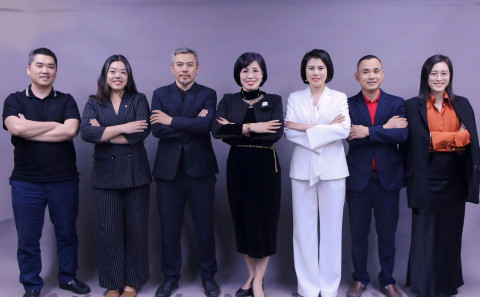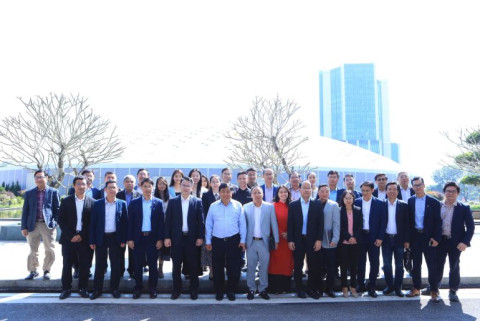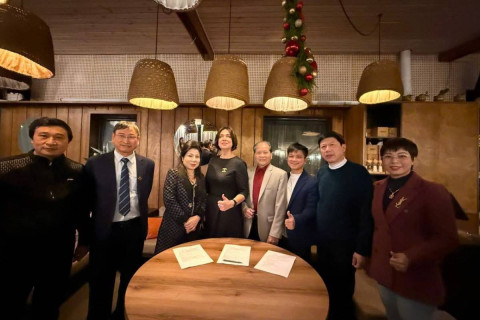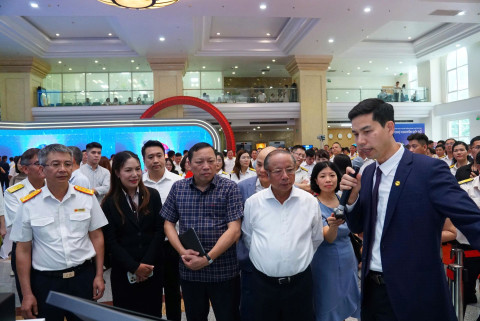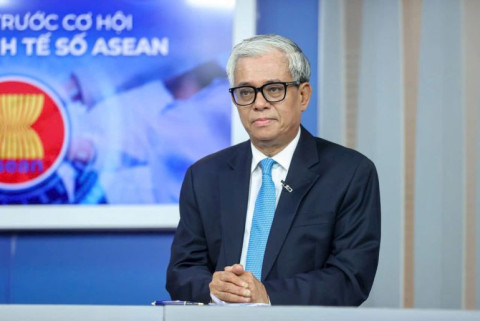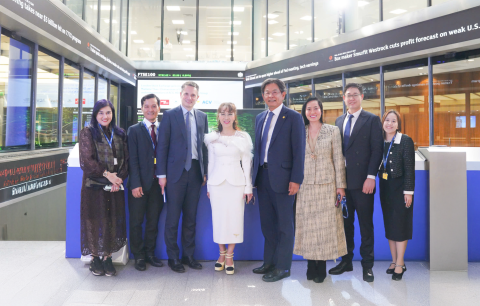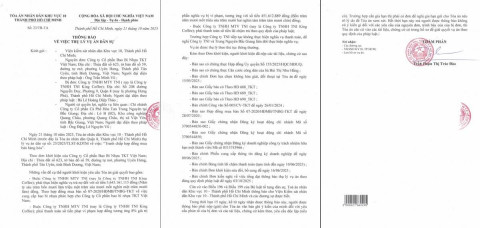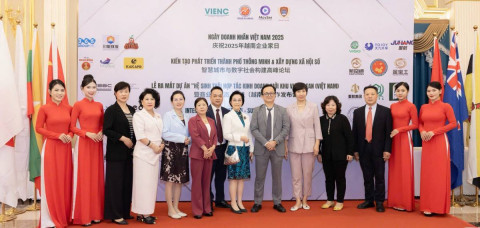National master plan Developing 6 socio-economic regions, 4 driving force zones
- 190
- Business
- 23:49 20/04/2023
DNHN - Vietnam aims to be a developed, high-income nation with an equitable, democratic, and civilized society by 2050, According to the national master plan.
At the conference, Minister of Planning and Investment Nguyen Chi Dung presented the main points of Resolution No. 81/2023/QH15 of the National Assembly on the National Master Plan for the period 2021-2030, with a vision to 2050. This is a very important legal document that represents a great accomplishment made possible by the hard work, foresight, and resolve of the government, the participation of the entire political system, and the effective participation of 30 research institutes, with more than 100 leading national and international scientists and experts to develop the country's first national master plan.
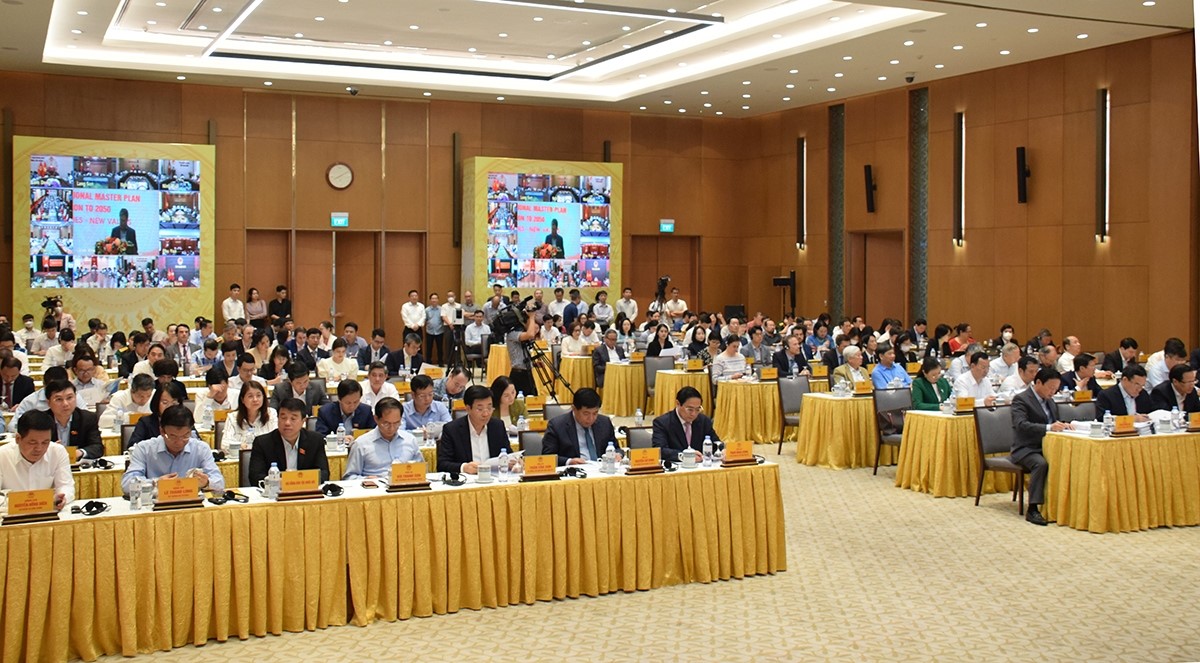
According to the master plan, the general goal is to strive by 2030 to be a developing country with modern industry, high middle income, and economic growth based on science, technology, innovation, and creativity. digital conversion; an effective, unified, and sustainable spatial organization model for national development. To form dynamic regions, economic corridors, and growth poles, with a synchronous and modern basic infrastructure network; ensuring great balances, improving the resilience of the economy; the ecological environment is protected; the material and spiritual life of the people is enhanced; national defense and security are guaranteed. Economic indicators: strive for the average GDP growth rate of the whole country to reach about 7.0%/year from 2021 to 2030. By 2030, GDP per capita at current prices will reach about 7,500 USD. By 2050, Vietnam will be a developed, high-income country with a fair, democratic, and civilized society. Modern and synchronous infrastructure system. The smart urban system is modern, rich in identity, and green. To develop harmonious and sustainable regions. The nation's fine cultural values and identities are preserved and promoted. Good quality environment, a harmonious society with nature, efficient development towards low carbon; strive to achieve the national target of reducing net emissions to "zero" as quickly as possible by 2050. The average growth rate in the period 2031 - 2050 will reach about 6.5 – 7.5 %/year.
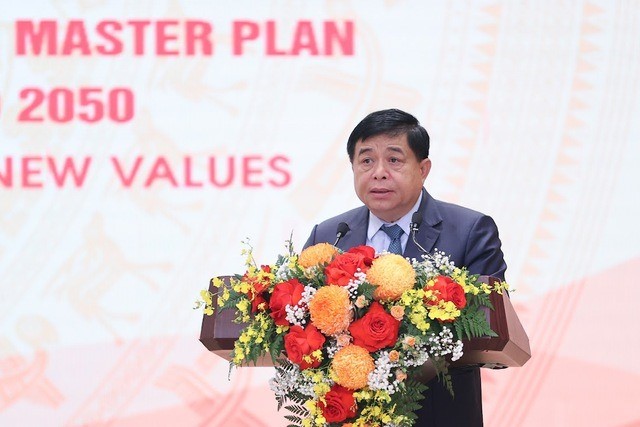
The master plan specifies the development of six socioeconomic regions in clear terms:
- Northern Midlands and Mountains: Green, sustainable, and comprehensive development. Focus on protecting and restoring forests; develop processing, manufacturing, and energy industries; cultivate high-tech, organic, and specialty agriculture. The construction of the industrial belt of Bac Giang - Thai Nguyen - Phu Tho drives the expansion of the entire region.
- The Red River Delta: To concentrate on developing contemporary industrial and service sectors. Building innovation centers and taking the lead in the advancement of science and technology. Continue to develop the Hai Phong - Quang Ninh region so that it becomes Southeast Asia's premier modern, international, and maritime economic center.
- North Central Region and Central Coast: To aggressively cultivate the marine economy while ensuring national defense and security. Enhance the effectiveness of seaports, coastal economic zones, and industrial parks. To cultivate maritime and island tourism, ecotourism, and cultural-historical tourism. To transform the Thanh Hoa - Nghe An - Ha Tinh coastal region into a regional and national industrial development hub.
- Central Highlands: ensuring water source security is associated with forest protection. Enhance the effectiveness of industrial plant construction. Accelerate the development of the agro-forestry product processing industry and renewable energy; develop bauxite mining, alumina processing, and aluminum production industries sustainably. To develop tourism while preserving and promoting the cultural identities and values of the ethnic groups of the Central Highlands.
- Southeast region: To become a dynamic development region, with a high economic growth rate, the country's largest growth engine; to be the region's center of science, technology, innovation, high-tech industry, logistics, and international financial center with high levels of competitiveness.
- Mekong Delta region: To transform the region into a sustainable, dynamic, and highly efficient agricultural economic hub for the entire nation, the region, and the globe. Renewable energy and development of the green economy. Adapt actively to climate change and rising sea levels.
In addition, create four national dynamic zones: the Northern dynamic region, the Southern dynamic region, the Central dynamic region, and the Mekong Delta dynamic region, with the following growth poles for each region: Hanoi, Ho Chi Minh City, Da Nang, Can Tho.
- Development of priority economic corridors until 2030: North-South economic corridor and two East-West economic corridors, Lao Cai-Hanoi-Hai Phong-Quang Ninh and Moc Bai-Ho Chi Minh City. Ho Chi Minh - Vung Tau.
The economic corridor follows the Ho Chi Minh Road and the North-South motorway to the West through the Central Highlands, Southeast, and six East economic corridors. - West, including Dien Bien - Son La - Hoa Binh - Hanoi; Cau Treo - Vung Ang; Lao Bao - Dong Ha - Da Nang; Bo Y - Pleiku - Quy Nhon; Chau Doc - Can Tho - Soc Trang; Ha Tien - Rach Gia - Ca Mau...
Thanh Ha
Related news
- Connecting Leaders, Shaping the Future: Strategic Leadership Planning Meeting – CorporateConnections Hanoi A
- Sunlight - Unilever Vietnam Recognized for Outstanding Contributions to the National Initiative Supporting Women Entrepreneurs
- Deputy Prime Minister Nguyễn Chí Dũng: “The country’s major challenges weigh heavily on my mind — and we must resolve them together.
- Unitsky String Technologies signs cooperation agreements with three Vietnamese partners, opening a new direction for smart mobility and sustainable development
- When artists do business – livelihood is no poetry!
- Before the D‑day to abolish flat‑rate tax: Fear of technology and costs leave small traders struggling to adapt
- Vietnamese enterprises at a crossroads: the impact of a potential US–China deal
- "Digital technicians" must not be forgotten if Vietnam aims to meet its strategic goals
- HDBank: Impressive profit growth, leading in profitability and advancing international integration
- TNI King Coffee sued for over VND 5 Billion in unpaid debts
- VINASME and Jeonnam Technopark Sign MOU on technology cooperation, human resource training, and trade promotion
- Vietnamese entrepreneurs strengthen ASEAN connectivity in the digital iIntegration era
- Prime Minister: Vietnam aims to become a regional logistics hub
- Vietnam upgraded to Secondary Emerging Market by FTSE Russell
- Hanoi’s economy grows 7.92% in first nine months of 2025, FDI surges nearly threefold
- Vietnam’s strong gdp growth fails to ease labor market distress
- US tariffs on Brazil propel Vietnam’s pangasius into global spotlight
- VietLeap AI Accelerator launches: A strategic springboard for Vietnam’s AI startups
- CICON expands strategic alliances: A new step forward in Vietnam–Korea business connectivity
- What must Vietnamese enterprises do to maintain their position in the global supply chain?
Đọc thêm Business
Connecting Leaders, Shaping the Future: Strategic Leadership Planning Meeting – CorporateConnections Hanoi A
"Your network is your most powerful flowing asset. It generates value, multiplies opportunities, and accelerates your influence across borders."
Innovative ESG enterprise: Trạm Xe Việt startup proposes solutions to build a green mobility ecosystem
As Vietnam commits to achieving Net Zero by 2050 and tightens emissions standards, the transportation sector faces unprecedented pressure to transform.
Deputy Prime Minister Nguyễn Chí Dũng: “The country’s major challenges weigh heavily on my mind — and we must resolve them together.
On the morning of November 26, 2025, Deputy Prime Minister Nguyễn Chí Dũng chaired a high-level working session at the National Innovation Center (NIC) in Hòa Lạc.
Unitsky String Technologies signs cooperation agreements with three Vietnamese partners, opening a new direction for smart mobility and sustainable development
The signing ceremony took place in Minsk, Belarus, on November 28, 2025.
Before the D‑day to abolish flat‑rate tax: Fear of technology and costs leave small traders struggling to adapt
From 1 January 2026 the flat‑rate tax regime will be abolished. Small business households will be required to declare tax based on actual revenue. MISA supports the transition with technology to help micro‑merchants adapt smoothly and transparently.
Vietnamese enterprises at a crossroads: the impact of a potential US–China deal
As the world closely monitors every shift in US-China relations, emerging signals of a strategic agreement between the two global powers are raising hopes for global economic stability.
HDBank: Impressive profit growth, leading in profitability and advancing international integration
Ho Chi Minh City Development Joint Stock Commercial Bank (HDBank, stock code HDB) announced its consolidated profit before tax for the first 9 months of 2025 reached VND 14,803 billion, marking a 17% increase year-on-year (YoY).
TNI King Coffee sued for over VND 5 Billion in unpaid debts
On October 21, 2025, the People’s Court of District 10 in Ho Chi Minh City officially accepted a civil lawsuit concerning a commercial contract dispute between TKT Vietnam Plastic Packaging Joint Stock Company and TNI King Coffee Co., Ltd.
VINASME and Jeonnam Technopark Sign MOU on technology cooperation, human resource training, and trade promotion
On October 15, 2025, in Hanoi, VINASME and Jeonnam Technopark (Korea) signed an MOU to promote trade, advance technology transfer, and develop human resources between enterprises of both nations.
Vietnamese entrepreneurs strengthen ASEAN connectivity in the digital iIntegration era
On the occasion of Vietnam Entrepreneurs’ Day (October 13), an international event themed “Integration – Innovation – Sustainable Development” was solemnly held in Ho Chi Minh City.


